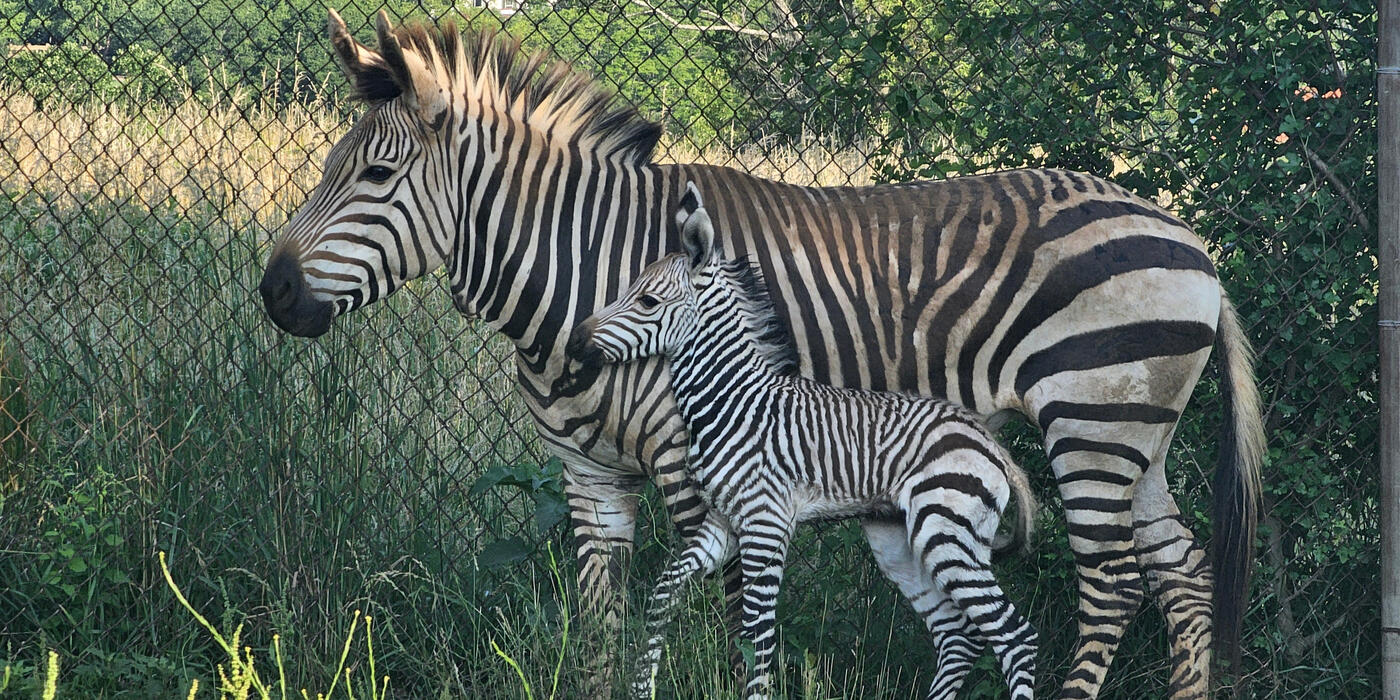Black-footed Ferret Kit Update: Wrestle, Eat, Sleep, Repeat

Life on the prairie can be challenging.
Severe weather, flash fires, predation from bigger animals and disease outbreaks test the abilities of the endangered black-footed ferrets that are slowly making a comeback in North America’s prairie ecosystem.
That’s why our ferret kits—which are part of our program to breed and reintroduce black-footed ferrets into the wild—will need to be healthy, confident and self-sufficient.
I’m pleased to say that so far, they’re on the right track.
The adorable new litter of ferrets, which you can see on the Black-footed Ferret Cam, are healthy and strong. The tiny kits have spent their entire lives under their mother Aristides’ protection, nursing, sleeping and growing…a lot. They are currently gaining about 10 grams, or around 1% of their body weight, per day. It’s amazing how fast they develop, but it makes sense when you consider ferrets are a species that is adapted to grow and reproduce quickly in the harsh and rugged terrain.
As of June 24, the yet-to-be-named kits are 6 weeks old, which is an exciting developmental time for a young ferret. They've opened their eyes. They’re wrestling with their siblings. They’re getting curious about life outside of their darkened den. Pretty soon, they will exit their nest box to explore their larger enclosure, where they can run, climb, chase each other and hide in enrichment items like plastic tubing and flowerpots.
This is also the time their eating habits change: while the kits have received all their nutrition from their mother’s milk so far, they are now beginning to eat meat.
As a species, black-footed ferrets are carnivores. In the wild, they rely almost exclusively on prairie dog populations for food—up to 90% of a black-footed ferret’s diet is made up of prairie dogs. In fact, part of their ecological role is to help bring balance to North American grasslands by keeping prairie dog populations in check. Scientists estimate one ferret eats about a hundred prairie dogs per year.
All the adult black-footed ferrets in our care mimic this natural behavior by hunting and eating live rats. At first, the kits on the Black-footed Ferret Cam will eat whatever rats Aristides brings to the den, but each kit will eventually learn to hunt for themselves. While this may seem cruel, it is essential for ferrets in our program to prepare for their lives in the wild. If they can’t locate prey for sustenance, these little hunters will have no hope of surviving.
Because each kit born at SCBI is considered a potential candidate for reintroduction, it’s important for all the babies to learn to hunt and sustain themselves with little to no human intervention. As we’ve explained in previous kit updates, our kits are part of a breeding program designed to support the wild population of ferrets and the breeding population in human care. (We still don’t know whether Aristides’ kits will be reintroduced—all potential reintroduction candidates must make it through the U.S. Fish and Wildlife Service’s black-footed ferret ‘boot camp’ to prove they’re capable of thriving in the wild. The ferrets that lack all the necessary survival skills can still contribute to the recovery of their species, but indirectly. They’ll either join breeding programs or serve as ambassadors to their species at zoos or other accredited wildlife facilities.)
This year, we’ve welcomed 44 ferret kits born at the Smithsonian Conservation Biology Institute, including the five currently featured on our Black-footed Ferret Cam. While the public can’t visit these ferrets—we want to keep their wild instincts honed, which means little to no human interaction—we welcome you to check out the Ferret Cam to watch the kits grow, cuddle and play. Or you can swing by the Small Mammal House to see black-footed ferrets and other tiny carnivores on your next trip to the Smithsonian’s National Zoo.
Black-footed Ferret Kit Cam
Tune in to the Black-footed Ferret Cam to see Aristides and her adorable kits 24/7.
Have you heard? Giant pandas are coming back to the Smithsonian’s National Zoo! Meet the new bear pair and learn what you can do to help the Zoo prepare for their arrival.
Related Species:




